You’ve seen them a hundred times—maybe even today. Perched on a wire. Pecking at crumbs. Calling from the treetops at sunrise. These everyday birds are part of the background of American life. So familiar, we stop noticing them. But hidden in plain sight are others—rarer, quieter, more elusive. Birds that slip through the branches like shadows. Birds that make seasoned birders drop their coffee and grab the binoculars. This list celebrates both. The backyard regulars you know by heart, and the feathered ghosts most of us only dream of seeing. Because sometimes, the ordinary deserves a second look— and the extraordinary might be just outside your window.
American Robin
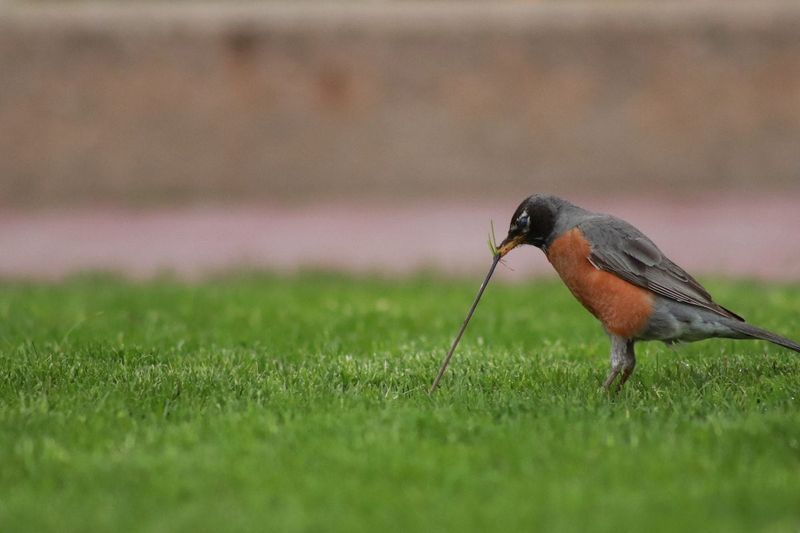
The American Robin is a harbinger of spring, often seen hopping across lawns in search of worms. Its vibrant orange belly and cheerful song make it a beloved bird in many backyards. Adaptable and resilient, the robin thrives in various habitats from urban parks to dense forests.
Did you know? Robins are among the earliest birds to sing at dawn, earning the nickname ‘dawn chorus leader.’ Their robust song is a morning delight for bird enthusiasts. Despite their familiarity, each sighting brings joy and a reminder of nature’s ever-present beauty.
Northern Cardinal
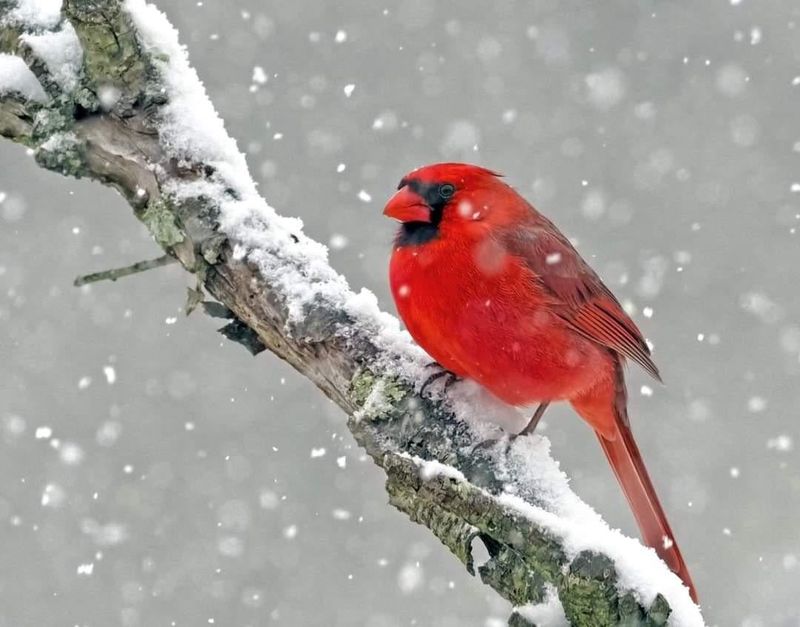
With its striking red color, the Northern Cardinal is a visual treat during winter months. This bird’s bold hue stands out against the stark white of snow, making it a popular subject for photographers. Male cardinals are particularly vibrant, while females have a warm brown tone with red highlights.
Cardinals are known for their distinctive crest and melodic whistles. These birds are often associated with cheerfulness and are thought to bring good luck. They mate for life, often seen in pairs, adding a romantic charm to gardens and woodlands.
Blue Jay
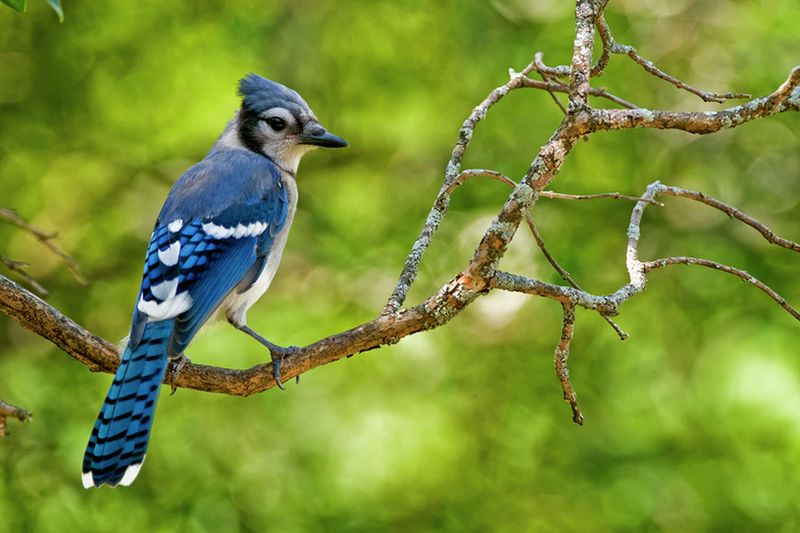
Feisty and intelligent, Blue Jays are known for their vibrant blue plumage and loud calls. These birds are highly social and often seen in noisy groups. Their ability to mimic the calls of hawks and other birds is fascinating, serving as both a defense mechanism and a playful trick.
Blue Jays love oak trees, feasting on acorns and caching them for later. This behavior aids in forest growth. Despite their sometimes quarrelsome nature, their striking appearance and clever antics make them a favorite among birdwatchers.
American Goldfinch
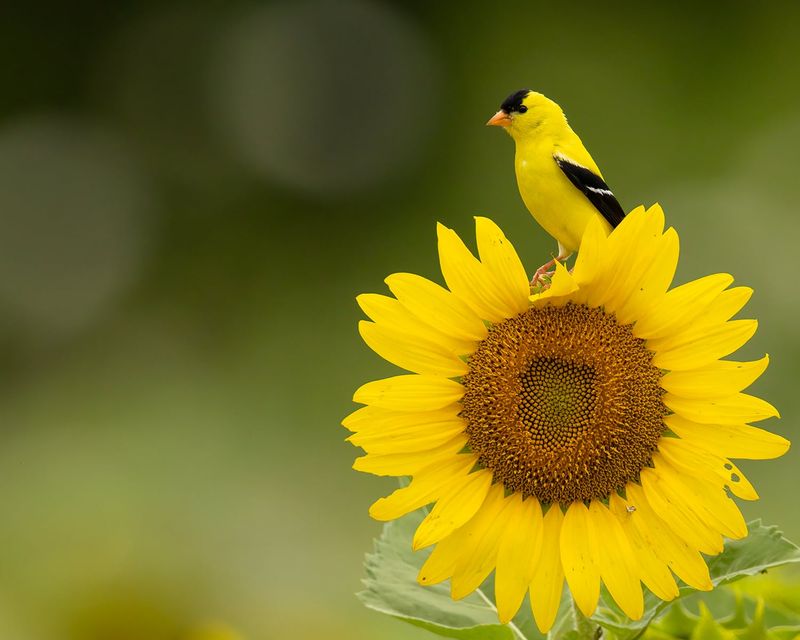
The American Goldfinch, with its bright yellow plumage, is often seen flitting through fields and gardens. Its cheerful color and musical flight call make it a delightful presence in any landscape. These birds are late nesters, often waiting until midsummer to raise their young.
Goldfinches are strict vegetarians, favoring seeds from sunflowers and thistles. Their acrobatic flight patterns and energetic behavior add a lively touch to their surroundings. Often called ‘wild canaries,’ they bring a splash of sunshine wherever they go.
American Crow
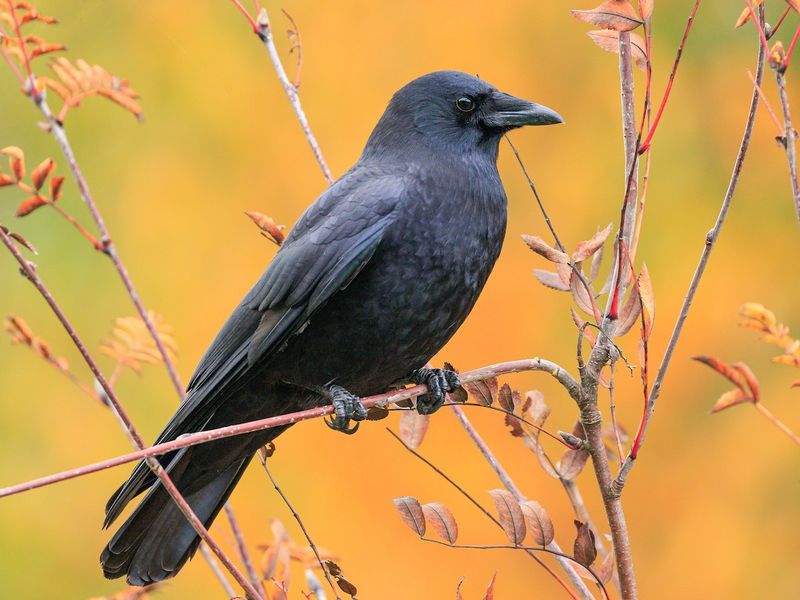
The American Crow is a familiar sight in both rural and urban environments. Known for their intelligence, crows are problem solvers, capable of using tools and recognizing human faces. Their glossy black plumage and complex social structures make them intriguing creatures to watch.
Crows are often misunderstood, but their adaptability and resourcefulness are admirable. They communicate with a wide range of vocalizations, displaying a sophisticated social network. Whether scavenging in city streets or roaming the countryside, crows are an essential part of the ecosystem.
Mourning Dove
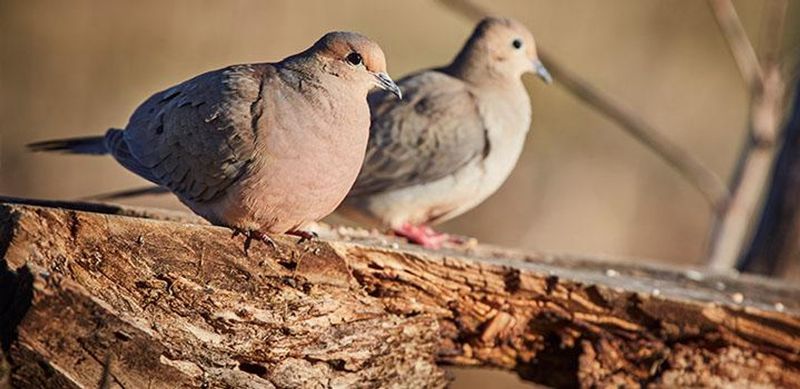
The gentle cooing of the Mourning Dove is a comforting sound in many American backyards. With its soft grey plumage and slender silhouette, this bird is a symbol of peace and tranquility. Mourning Doves are often seen feeding on the ground, pecking at seeds and grains.
These birds are monogamous, often nesting in simple open cups made of twigs. Their rapid, whistling flight and distinctive mourning call add to their serene presence. Despite their abundance, each sighting feels like a special encounter with these graceful birds.
Red-tailed Hawk
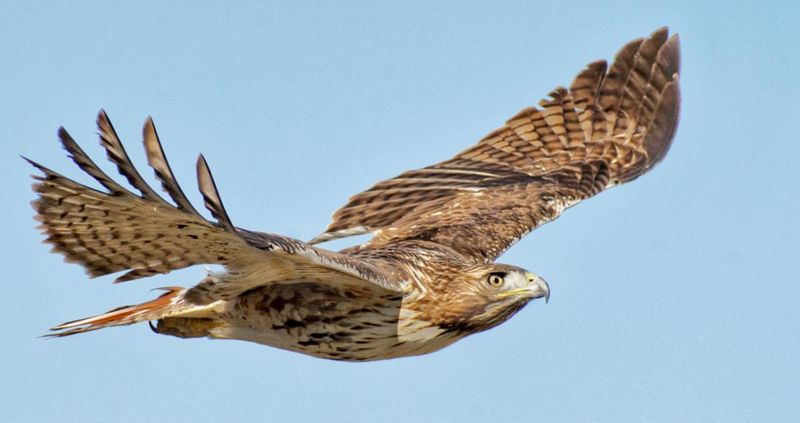
The Red-tailed Hawk is a majestic bird of prey, often seen soaring high above open fields. Its keen eyesight and powerful hunting skills make it a formidable predator. Recognized by its reddish tail feathers, this hawk is a symbol of strength and freedom.
Red-tailed Hawks are adaptable, inhabiting diverse environments from deserts to woodlands. They are often seen perched on poles or treetops, surveying their territory. Their piercing call is a quintessential sound of the American wilderness, adding a touch of wild majesty to the skies.
House Sparrow

The House Sparrow is a common sight in urban areas, known for its adaptability and resilience. These small birds are often seen in bustling city centers, thriving amidst human activity. Their brown and grey plumage allows them to blend seamlessly into their surroundings.
House Sparrows are social creatures, often found in noisy flocks. They build nests in crevices and under eaves, making the most of urban architecture. Despite their ubiquity, sparrows continue to charm with their lively presence and industrious nature.
Eastern Bluebird
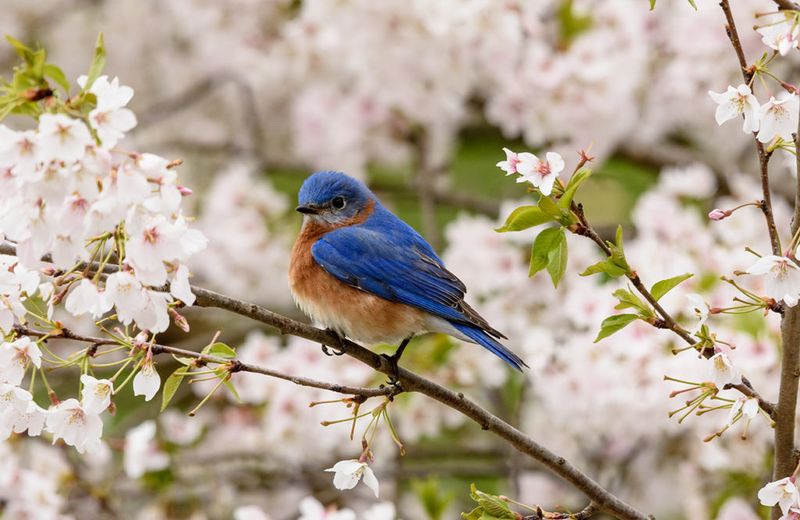
The Eastern Bluebird is a symbol of happiness and good fortune, often seen flitting across open fields and gardens. Males boast vibrant blue backs and rust-colored bellies, creating a striking visual contrast. These birds prefer open landscapes with scattered trees and shrubs.
Bluebirds are cavity nesters, often using old woodpecker holes or man-made nest boxes. Their melodious song and gentle demeanor make them a joy to observe. Encouraging bluebirds in your garden is a rewarding experience, bringing color and life to your surroundings.
American Kestrel
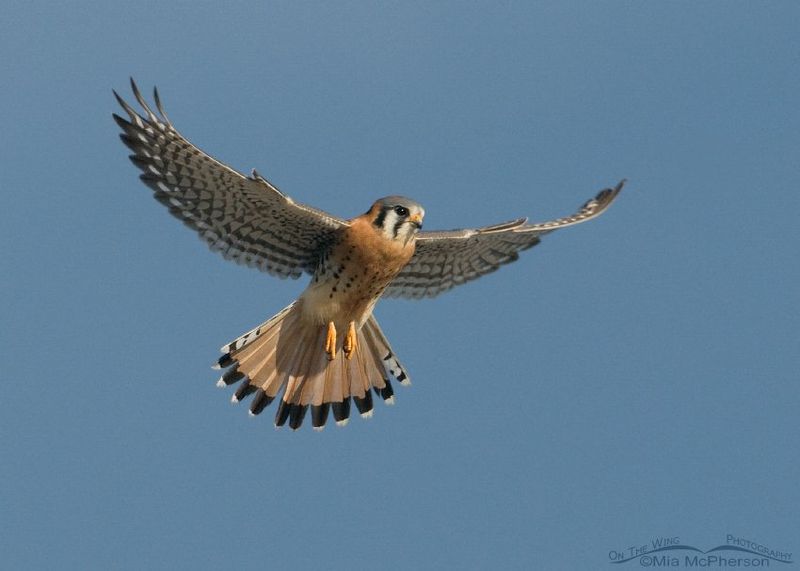
The American Kestrel is a small but fierce predator, known for its colorful plumage and agile flight. Often seen hovering in open fields, kestrels hunt insects and small prey with precision. Males are particularly striking, with slate-blue wings and spotted chests.
Kestrels are highly adaptable, thriving in varied habitats from countryside to cityscapes. Their keen eyesight and hunting prowess make them fascinating subjects to watch. Despite their small size, these raptors exhibit a bold spirit and tenacity that captivates bird lovers.
European Starling

The European Starling is an invasive yet fascinating species, known for its iridescent plumage and mimicking abilities. These birds are often seen in dense flocks, performing aerial displays that mesmerize observers. Starlings are highly social, thriving in both rural and urban settings.
Despite their non-native status, starlings have become a common sight across America. They are opportunistic feeders, with a diet ranging from insects to fruits. Their adaptability and striking appearance make them a controversial yet intriguing part of the avian world.
Barn Swallow
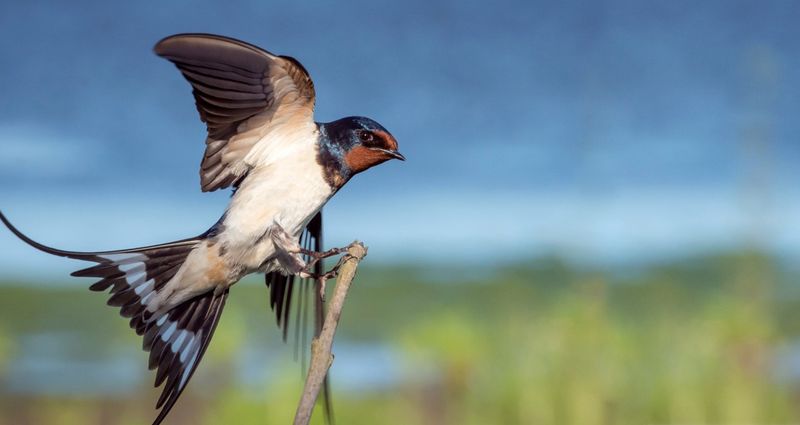
The Barn Swallow is a symbol of grace and agility, known for its sleek body and distinctive forked tail. These birds are expert fliers, often seen darting over fields and lakes in pursuit of insects. Their deep blue and rust-colored plumage adds to their charm.
Barn Swallows are migratory, traveling great distances between breeding and wintering grounds. They are often found nesting in barns and under eaves, where they build mud cup nests. Their aerial acrobatics and cheerful presence make them a favorite among birdwatchers.
Black-capped Chickadee
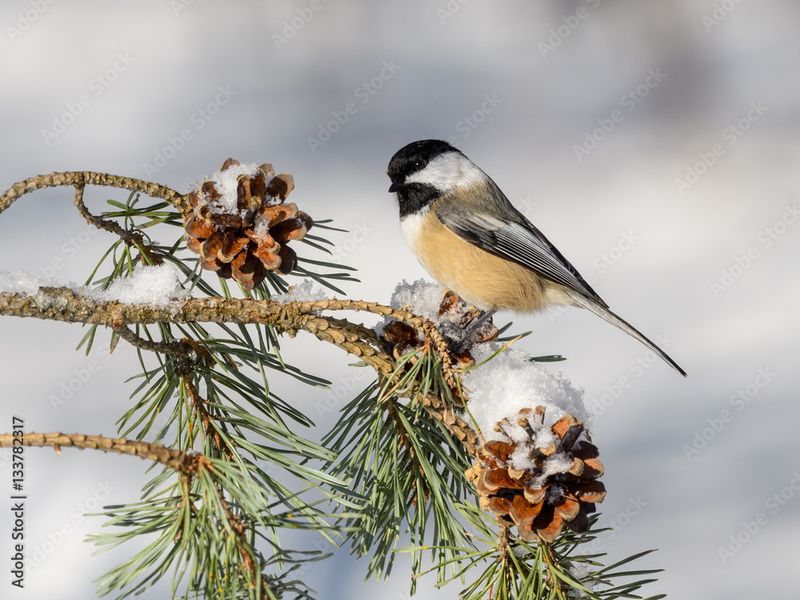
The Black-capped Chickadee is a small, friendly bird, easily recognized by its black cap and white cheeks. These curious creatures are often seen flitting through woodlands and backyard feeders, delighting observers with their lively antics.
Chickadees are known for their complex vocalizations, which include their namesake ‘chick-a-dee-dee-dee’ call. They are non-migratory, enduring harsh winters with remarkable resilience. Their inquisitive nature and approachable demeanor make them a beloved presence in any garden.
Snowy Owl

The Snowy Owl is a rare and mesmerizing sight, known for its striking white plumage and piercing yellow eyes. These majestic birds are found in Arctic regions, occasionally making their way to more temperate areas during winter irruptions.
Snowy Owls are powerful hunters, preying on rodents and small mammals. Their silent flight and commanding presence make them a thrilling find for birdwatchers. Their appearance in unusual locations is a cause for excitement, adding a touch of the Arctic’s mystery to the landscape.
California Condor
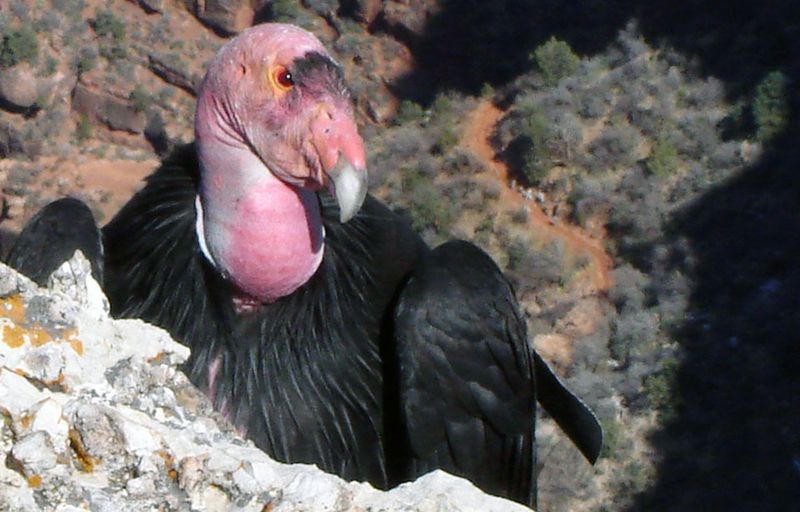
The California Condor is one of the most endangered birds, with a wingspan that commands awe. These birds are often seen soaring over the Grand Canyon and other rugged landscapes, symbolizing hope for conservationists.
Condors are scavengers, playing a crucial role in their ecosystem by cleaning up carcasses. Their recovery from near extinction is a testament to successful conservation efforts. Spotting a California Condor is a rare and unforgettable experience, representing the triumph of determination in preserving our natural heritage.
Whooping Crane
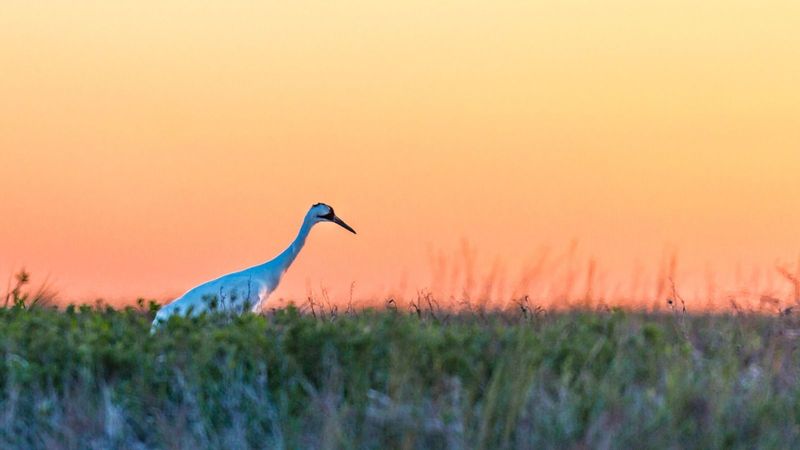
The Whooping Crane is one of North America’s tallest birds, known for its elegant stature and haunting calls. These endangered birds are found in wetlands, where they feed on aquatic plants and small animals.
Whooping Cranes are a conservation success story, their population slowly recovering thanks to dedicated efforts. Their graceful dance and synchronized movements during courtship are mesmerizing. Observing these majestic cranes in their natural habitat is a privileged glimpse into the fragile beauty of our planet.
Ivory-billed Woodpecker
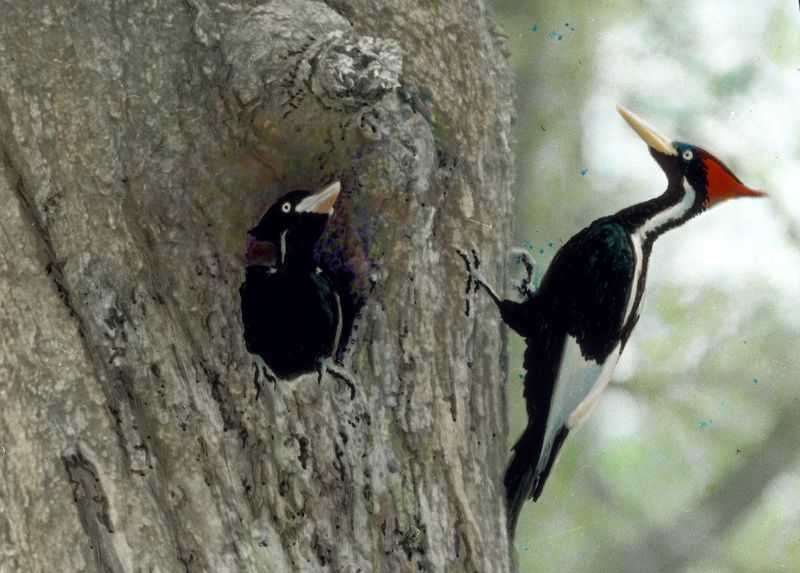
The Ivory-billed Woodpecker is a legendary bird, often thought extinct but occasionally rumored to be spotted in remote swamps. Its striking appearance and elusive nature make it the Holy Grail for birdwatchers.
This woodpecker’s large size and distinctive call once dominated the Southern hardwood forests. Efforts to confirm its existence continue, driven by the hope of rediscovery. Though sightings are rare, the Ivory-billed Woodpecker symbolizes the allure of mystery and the enduring spirit of wild places.
Bald Eagle
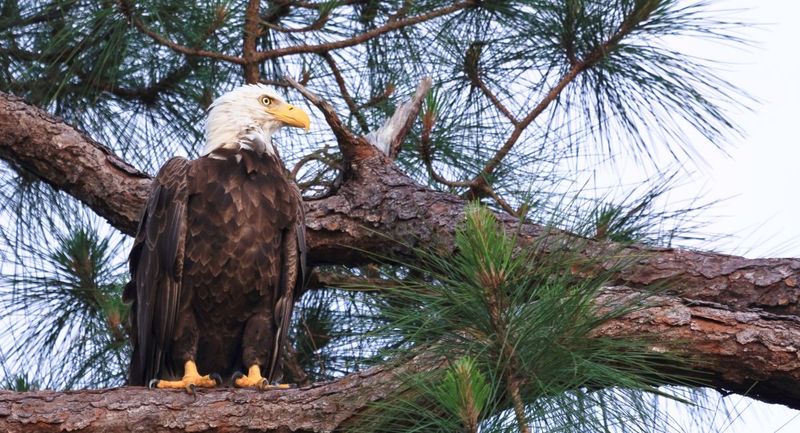
The Bald Eagle, America’s national bird, is a powerful symbol of freedom and strength. With its striking white head and broad wings, it is often seen soaring above lakes and rivers, a masterful hunter of fish.
Once endangered, the Bald Eagle has made a remarkable recovery, a testament to successful conservation efforts. Their presence is a proud sight, often associated with courage and resilience. Spotting a Bald Eagle in the wild is a stirring experience, capturing the essence of the American wilderness.
Peregrine Falcon

The Peregrine Falcon is famed for its speed, making it the fastest bird in the world. These raptors have adapted to urban life, nesting on skyscrapers and bridges, where they hunt pigeons and other birds.
Peregrine Falcons are known for their dramatic hunting stoop, a high-speed dive that can reach over 200 miles per hour. Their adaptability and prowess are awe-inspiring, earning them a special place in the hearts of birding enthusiasts. Observing a Peregrine Falcon in action is witnessing nature’s precision and power.
Scarlet Tanager
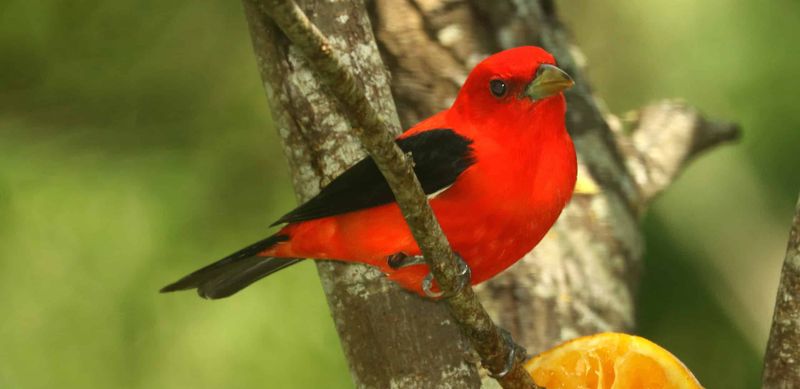
The Scarlet Tanager is a visual marvel, with its vivid red body and contrasting black wings. These birds are often found in deciduous forests, where they feed on insects and fruits.
Despite their bright appearance, Scarlet Tanagers can be surprisingly elusive, blending into the forest canopy. Their melodious song adds a lyrical touch to the woodland symphony. Spotting a Scarlet Tanager is a delightful surprise, a burst of color amidst the greenery, reminding us of nature’s vibrant palette.

